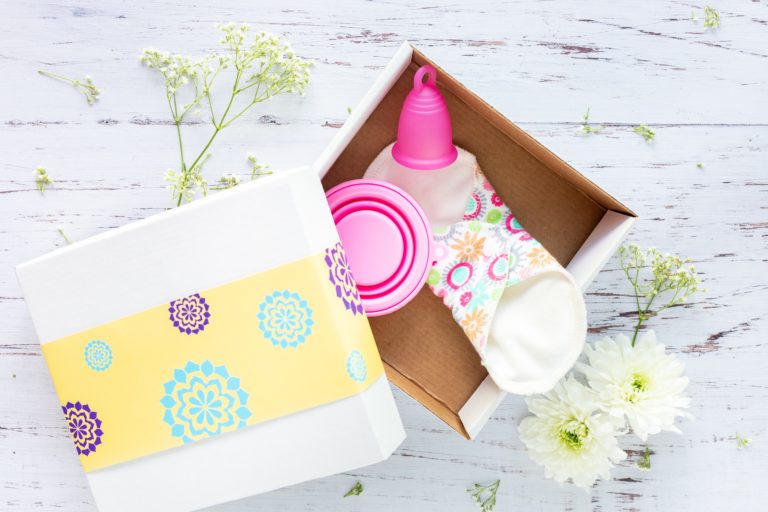“Is this pregnancy safe?” Many times my two sisters asked me this question throughout their pregnancies.
When I mentioned to my youngest sister that she might want to stop using lavender oil during her pregnancy, because I knew she used it to help with anxiety, and lavender oil can cause miscarriages – she promptly told me that wasn’t true, that lavender is pregnancy safe, because it’s natural.
Later in her pregnancy, when she asked me if I knew of something that might help dissolve gallbladder stones and I mentioned dandelion tea, among other things, her doctor told her dandelion was dangerous because it hadn’t been “proven” safe in pregnancy.
These are both common misconceptions.
Most of us tend to think either that everything natural is safe in pregnancy because natural is “always safe”, or that nothing natural is safe in pregnancy because it hasn’t been “proven safe” through clinical trials.
Neither mindset is true, but the first one is more dangerous because plenty of natural herbs have emmenagogue (read: will regulate your cycle and likely make your period start) and uterine stimulating effects. Which is great if you’re not pregnant and want your cycle to become more regular, but irreversibly damaging if you’re expecting. These classes of herbs can cause miscarriages.
Some other classes of herbs have intense effects that are simply too strong for a growing embryo, so they can also cause miscarriage or birth defects.
However, the issue of deciding which herbs are pregnancy safe is a tricky one.
Largely because nobody is going to do scientific research on pregnant mothers and risk them miscarrying or harming their babies in the process.
It’s just not worth it to find out “for sure” which natural plant medicine is safe to take while pregnant.
In general though, the majority of medicinal herbs in use today have a long history of use, and the ones that have been found to be contraindicated in pregnancy are well documented.
I have found it difficult to find a list that shows clearly which medicinal herbs you should avoid while pregnant and which are probably pregnancy safe, so I decided to make one.
I’ll start with pregnancy safe herbs, and then list contraindicated herbs after.
Disclaimer:
The herbs listed below have been historically documented to either not be contraindicated in pregnancy or be contraindicated in pregnancy.
This does not mean that any of these herbs have been “proven safe” in pregnancy.
Consume these herbs at your own risk. The usual advice is to avoid herbal medicine during the first trimester if possible and use caution during the second and third trimesters. It is always a good idea to discuss anything new you’d like to take with your midwife or OB/GYN.
HERBS NOT KNOWN TO BE CONTRAINDICATED IN PREGNANCY
- Acerola berry malpighia emarginata
- Ailanthus altissima
- Alfalfa grass medicago sativa
- Aloe vera (topically)
- Anise seed pimpinella anisum
- Ashwagandha root withania somnifera (avoid high doses, however)
- Astragalus astragalus propinquus
- Bacopa monnieri
- Bayberry myrica
- Bidens pilosa
- Bilberry vaccinium myrtillus
- Birch bark
- Black Currant seed ribes nigrum
- Black Walnut juglans nigra
- Boldo peumus boldus
- Borage borago officinalis
- Boswellia serrata
- Buchu agathosma betulina
- Butcher’s Broom ruscus aculeatus
- Calendula calendula officinalis (topically)
- Cascara sagrada
- Catnip nepeta cataria
- Cayenne capsicum annuum
- Cedar cedrus
- Celery root
- Chamomile matricaria recutita (small amounts, eg. one cup of tea daily or in digestive bitters)
- Chanca Piedra
- Chickweed stellaria media
- Chlorella
- Chuchuhuasi maytenus laevis
- Cinnamon cinnamomum burmanni (in cooking doses)
- Cleavers galium aparine
- Clove syzygium aromaticum
- Condonopsis pilosula
- Comfrey symphytum (topically)
- Coral Root corallorhiza maculata
- Cordyceps
- Corn Silk zea mays
- Corydalis
- Cranberry vaccinium macrocarpon
- Damiana turnera diffusa
- Dandelion taraxacum
- Dill anethem graveolens
- Dulse palmaria palmata
- Echinacea angustifolia & purpurea
- Elderberry syrup & elder flower
- Eleutherococcus
- Eucalyptus (topically)
- Eyebright euphrasia
- False Unicorn root chamaelirium luteum
- Fennel foeniculum vulgare
- Fenugreek trigonella foenum-graecum
- Flax seed linum usitatissimum
- Garlic allium sativum
- Gastrodia elata
- Ginger zingiber officinale (small amounts, eg. one cup of tea daily or in digestive bitters)
- Ginkgo biloba
- Gotu kola
- Gravel root eutrochium purpureum
- Green tea camellia sinensis
- Guarana
- Hawthorn crataegus
- Hops humulus lupulus
- Horehound marrubium vulgare
- Horse Chestnut aesculus hippocastanum
- Hydrangea root
- Indian Pipe monotropa uniflora
- Irish Moss chondrus crispus
- Jamaican Dogwood piscidia piscipula
- Jaborandi pilocarpus
- Jatoba hymenaea courbaril
- Khella ammi visnaga
- Kratom mitragyna speciosa
- Kudzu root pueraria lobata
- Lemon Balm melissa officinalis
- Lemongrass cymbopogon
- Lion’s Mane hericium erinaceus
- Maca lepidium meyenii
- Macela achyrocline satureioides
- Marshmallow root althaea officinalis
- Milk Thistle seed silybum marianum
- Mucuna Pruriens
- Muira Puama
- Mullein flower & leaf verbascum
- Mustard seed
- Nettle leaf urtica dioica
- Oatstraw/Milky Oats avena sativa
- Olive leaf olea europa
- Papaya leaf carica papaya
- Parsley petroselinum crispum
- Pasque flower pulsatilla
- Pau D’Arco tabebuia impetiginosa
- Peppermint mentha piperita (small amounts, eg. one cup of tea daily)
- Pine Pollen
- Plantain leaf plantago major
- Pleurisy root asclepias tuberosa
- Primrose seed oil oenothera biennis
- Pumpkin
- Puncture vine/caltrop tribulus terrestris
- Pygeum bark prunus africana
- Red Clover trifolium pratense
- Red Raspberry rubus idaeus
- Rhodiola rosea
- Rosehips rosa canina & rosa rubiginosa
- Rosemary rosemarinus officinalis (only cooking amounts)
- Sage salvia officinalis (only cooking amounts)
- Schisandra chinesis
- Spirulina
- Stephania root
- St. John’s Wort hypericum perforatum
- Sangre De Grado croton lechleri
- Sarsaparilla similax spp.
- Saw Palmetto serona repens
- Scullcap (American) scutellaria lateriflora
- Slippery Elm ulmus rubra
- Squawvine/Partridgeberry mitchella repens
- Stone root collinsonia canadensis
- Suma hebanthe eriantha
- Teasel dipsacus
- Tea Tree melaleuca (topically)
- Thyme thymus vulgaris
- Turmeric curcuma longa
- Valerian valeriana officinalis
- White Oak Bark quercus alba
- Wild Oregano oraginum vulgare
- Wintergreen gaultheria procumbens
- Witch Hazel
- Yarrow achillea millefolium
- Yellow Dock root rumex crispus
- Yerba Mate ilex paraguariensis
- Yucca
HERBS CONTRAINDICATED IN PREGNANCY
- Aloe vera (internally)
- Andrographis paniculata
- Artemisia spp.
- Barberry berberis
- Black Cohosh actaea racemosa
- Black Haw viburnum prunifolium
- Blessed Thistle cnicus benedictus
- Blue Cohosh caulophyllum thalictroides
- Boneset eupatorium perfoliatum
- Burdock arctium
- Butterbur petasites hybridus
- Cat’s Claw uncaria tomentosa
- Celery Seed
- Chasteberry/Vitex vitex agnus-castus
- Chinese Senga Root polygala tenuifolia
- Chinese Scullcap scutellaria baicalensis
- Cramp Bark viburnum opulus
- Cryptolepis sanguinolenta
- Devil’s Claw harpagophytum
- Dong Quai/Angelica angelica sinesis
- Elder root, leaves, and raw berries sambucus ebulus
- Elephant’s Head/Lousewort pedicularis spp.
- Feverfew tanacetum parthenium
- Gentian gentiana
- Goldenseal hydrastis canadensis
- Gou Teng uncaria rhynchophylla
- Greater Celandine cheladonium majus
- Horsetail equisetum
- Houttuynia spp.
- Hyssop hyssopus officinalis
- Japanese Knotweed polygonum cuspidatum
- Juniper juniperus
- Kava Kava piper methysticum
- Lady’s Mantle alchemilla
- Lavender lavandula
- Licorice root glycerrhiza glabra
- Meadowseet filipendula ulmaria
- Mistletoe (American)
- Motherwort leonurus cardiaca
- Mugwort artemisia vulgaris
- Myrrh commiphora myrrha
- Oregon Grape mahonia aquifolium
- Panax Ginseng
- Passion Flower passiflora
- Pennyroyal metha pulegium
- Paeonia lactiflora
- Peppermint mentha piperita (essential oil)
- Phellodendron
- Prickly Ash zanthoxylum americanum
- Primrose Root oenothera biennis
- Red Root ceanothus americanus
- Red Sage salvia miltiorrhiza
- Rhubarb rheum rhabarbarum
- Rosemary rosemarinus officinalis
- Rue ruta
- Safflower carthamus tinctorius
- Sage salvia officinalis
- Sida acuta
- Squaw Vine mitchella repens
- Tansy tanacetum vulgare
- Trillium
- Uva Ursi arctostaphylos uva-ursi
- Vervain verbena
- White Willow Bark salix alba
- Wild Cherry Bark prunus serotina
- Wild Yam dioscorea villosa
- Wood Betony stachys officinalis
- Wormwood artemesia absenthium
- Yohimbe pausinystalia johimbe
Disclaimer: I am not a licensed doctor and do not diagnose or treat disease. Please do not substitute information in this educational blog post for the personalized advice of your health practitioner.
References: Practical Herbalism (Philip Fritchey), Healing Lyme 2nd Edition (Stephen Harrod Buhner), and Prescription for Nutritional Healing 5th Edition (Phyllis A. Balch)
To learn about the pregnancy safe and contraindicated herbs in the Buhner protocols, read this post.


